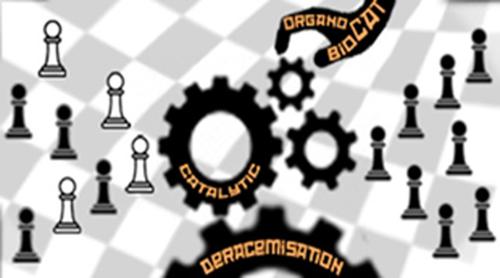当前位置:
X-MOL 学术
›
Adv. Synth. Catal.
›
论文详情
Our official English website, www.x-mol.net, welcomes your feedback! (Note: you will need to create a separate account there.)
Deracemisation Processes Employing Organocatalysis and Enzyme Catalysis
Advanced Synthesis & Catalysis ( IF 5.4 ) Pub Date : 2020-01-21 , DOI: 10.1002/adsc.201901112 Carmen Aranda 1 , Gabriela Oksdath‐Mansilla 2 , Fabricio R. Bisogno 2 , Gonzalo Gonzalo 3
Advanced Synthesis & Catalysis ( IF 5.4 ) Pub Date : 2020-01-21 , DOI: 10.1002/adsc.201901112 Carmen Aranda 1 , Gabriela Oksdath‐Mansilla 2 , Fabricio R. Bisogno 2 , Gonzalo Gonzalo 3
Affiliation

|
Deracemisation methods have demonstrated their importance in the preparation of chiral compounds in the last few years. In order to resolve a racemic mixture in a dynamic sense, one enantiomer of the starting material can be converted to the other through a deracemisation procedure, that can be achieved by different mechanisms based on stereoinversion or enantioconvergence, often involving two‐opposite half reactions, with at least one of the reactions being enantioselective enough to finally obtain an enantioenriched chiral compound. The focus of this comprehensive review is on the application of deracemisation procedures in the present century in order to obtain optically active valuable compounds when employing non‐metallic catalysts. Thus, the review will mainly focus on the use of different enzymatic preparations (purified enzymes, cell‐free extracts or whole cell systems) and organocatalysts for the deracemisation of racemic mixtures.
中文翻译:

利用有机催化和酶催化进行脱氮过程
在过去的几年中,脱硫方法已经证明了其在制备手性化合物中的重要性。为了从动力学意义上解决外消旋混合物,可以通过脱轨过程将起始原料的一种对映异构体转化为另一种对映异构体,这可以通过基于立体反转或对映体收敛的不同机制来实现,通常涉及两个相反的半反应,其中至少一个反应具有足够的对映体选择性,以最终获得富含对映体的手性化合物。这项全面综述的重点是在本世纪应用脱硝程序,以便在使用非金属催化剂时获得具有光学活性的有价值的化合物。因此,本次审查将主要侧重于使用不同的酶制剂(纯化的酶,
更新日期:2020-01-22
中文翻译:

利用有机催化和酶催化进行脱氮过程
在过去的几年中,脱硫方法已经证明了其在制备手性化合物中的重要性。为了从动力学意义上解决外消旋混合物,可以通过脱轨过程将起始原料的一种对映异构体转化为另一种对映异构体,这可以通过基于立体反转或对映体收敛的不同机制来实现,通常涉及两个相反的半反应,其中至少一个反应具有足够的对映体选择性,以最终获得富含对映体的手性化合物。这项全面综述的重点是在本世纪应用脱硝程序,以便在使用非金属催化剂时获得具有光学活性的有价值的化合物。因此,本次审查将主要侧重于使用不同的酶制剂(纯化的酶,


























 京公网安备 11010802027423号
京公网安备 11010802027423号